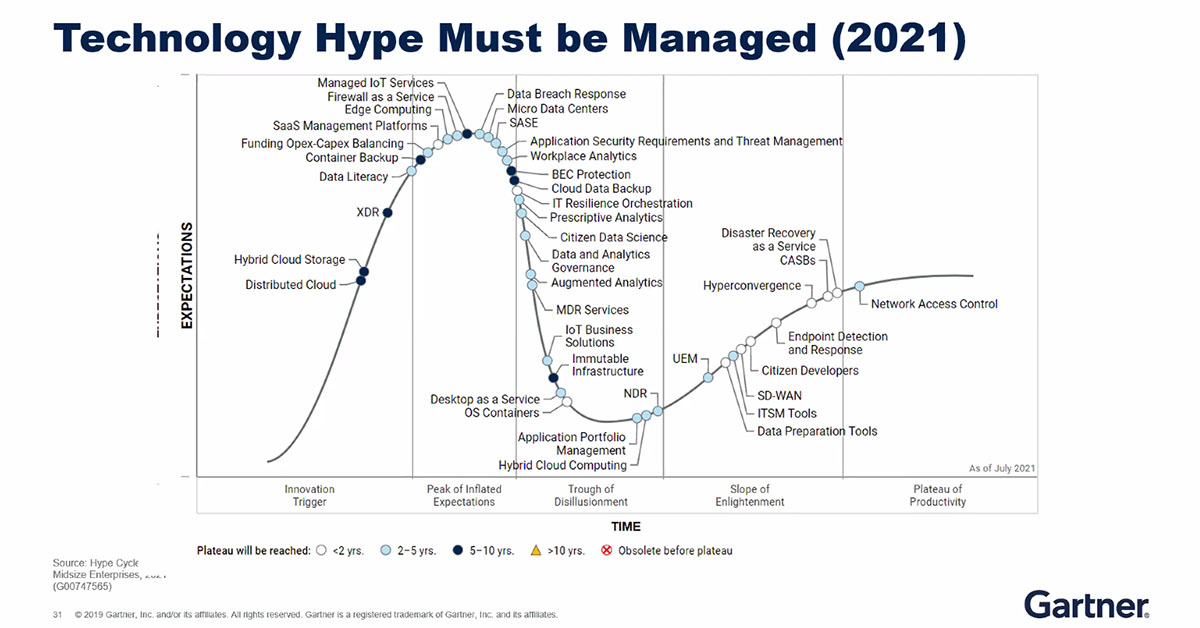
Managing Technology Hype Cycles
Gartner recently presented some interesting findings at a virtual event called “A Midsize Enterprise Perspective for Technology Providers.” One of the most fascinating parts of that presentation was the discussion of Hype Cycles and how knowing about them can help an IT leader make the right decisions for his/her organization. Gartner says, when new technologies make bold promises, how do you discern the hype from what’s commercially viable? And when will such claims pay off, if at all? Gartner Hype Cycles provide a graphic representation of the maturity and adoption of technologies and applications, and how they are potentially relevant to solving real business problems and exploiting new opportunities. Gartner’s Hype Cycle methodology gives you a view of how a technology or application will evolve over time, providing a sound source of insight to manage its deployment within the context of your specific business goals.
They continue that Gartner clients use Hype Cycles to get educated about the promise of an emerging technology within the context of their industry and an individual appetite for risk. If there are too many unanswered questions about the commercial viability of emerging technology, it may be better to wait until others have been able to deliver tangible value.
How do Hype Cycles work?
Each Hype Cycle drills down into the five key phases of a technology’s life cycle.
- Innovation Trigger: A potential technology breakthrough kicks things off. Early proof-of-concept stories and media interest trigger significant publicity. Often no usable products exist and commercial viability is unproven.
- Peak of Inflated Expectations: Early publicity produces a number of success stories — often accompanied by scores of failures. Some companies take action; many do not.
- Trough of Disillusionment: Interest wanes as experiments and implementations fail to deliver. Producers of the technology shake out or fail. Investments continue only if the surviving providers improve their products to the satisfaction of early adopters.
- Slope of Enlightenment: More instances of how the technology can benefit the enterprise start to crystallize and become more widely understood. Second- and third-generation products appear from technology providers. More enterprises fund pilots; conservative companies remain cautious.
- Plateau of Productivity: Mainstream adoption starts to take off. Criteria for assessing provider viability are more clearly defined. The technology’s broad market applicability and relevance are clearly paying off.
According to Gartner, Hype Cycles help IT leaders:
- Separate hype from the real drivers of a technology’s commercial promise
- Reduce the risk of your technology investment decisions
- Compare your understanding of a technology’s business value with the objectivity of experienced IT analysts
Hype plays a BIG role in the IT budget as well as every decision to buy every product/service must deliver on its promise. And that’s why the smartest tech leaders of mid-market organizations know about TechTrust—a unique technology buying service that provides cash-back allowances to expand IT budgets. Getting some cash back from your tech purchases might just save your budget this year.

